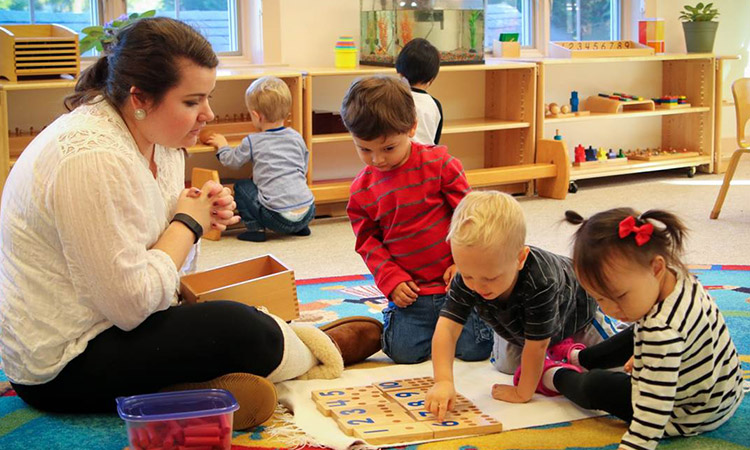Fine motor skills and coordination are essential for a child’s development as they lay the foundation for various complex activities later in life. These skills refer to the ability to control and coordinate small muscles in the hands and fingers, which are necessary for tasks such as holding a pencil, using scissors, buttoning shirts, and tying shoelaces.
Montessori Approach: Hands-on Learning
The Montessori education method emphasizes hands-on learning experiences that allow children to explore and develop their fine motor skills and coordination through purposeful activities. By engaging in practical life exercises and sensory experiences, children enhance their hand-eye coordination, concentration, and cognitive abilities while promoting independence and self-confidence.
Montessori Activities to Nurture Fine Motor Skills
There are numerous Montessori activities that focus on nurturing fine motor skills in children. These activities are designed to be engaging, enjoyable, and offer hands-on learning experiences. Here are a few examples:
1. Pouring Exercises
In this activity, children learn how to pour water from one small pitcher to another, using a small jug. It not only teaches them control and coordination but also encourages concentration and precision.
2. Sensorial Materials
Montessori sensorial materials, such as the famous “Pink Tower” or “Knobbed Cylinders,” help children refine their senses and develop fine motor skills. Through these materials, children learn to grasp, handle, and manipulate objects with precision.
3. Bead/Stringing Activities
Bead or stringing activities involve threading beads onto a string or wire. This activity helps children enhance their hand-eye coordination, concentration, and dexterity. It also promotes creativity as they can create patterns or designs with different colored beads.
4. Puzzles and Manipulative Toys
Puzzles and manipulative toys, like building blocks or wooden peg puzzles, are excellent tools for developing fine motor skills. They involve grasping, placing, and manipulating objects, which aids in hand-eye coordination, problem-solving, and logical thinking.
Coordination-building Montessori Activities
Coordination is the ability to synchronize different parts of the body to perform a task effectively. Montessori activities that focus on coordination development usually involve large muscle movements. Here are a few examples:
1. Walking the Line
Walking along a line or a balance beam helps children improve their coordination and balance. They learn to control their movements and maintain balance while walking straight, which strengthens their core muscles and enhances overall coordination.
2. Beanbag Toss
A beanbag toss game involves throwing beanbags into targets or hoops, enhancing hand-eye coordination, and improving gross motor skills. This activity also helps children understand distance and aim.
3. Nature Walks
Taking children on nature walks or outdoor excursions allows them to explore their surroundings, climb, jump, and navigate different terrains. These experiences foster coordination, balance, and body awareness.
4. Yoga and Stretching
Yoga and stretching exercises help children improve their coordination, body awareness, flexibility, and balance. Various poses challenge children to control their bodies and perform balanced movements.
The Montessori approach to hands-on learning provides a conducive environment for children to develop their fine motor skills and coordination. By engaging in purposeful activities, children not only refine their motor skills but also cultivate independence, concentration, and cognitive abilities. These activities not only prepare children for future academic challenges but also promote overall development and self-confidence.
Nidhin
For More Details Call: +917510220582



